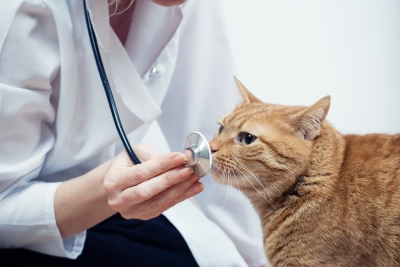
Moving can get tricky if you have pets, especially if you're making a long distance move. Sometimes in the middle of the all of the planning you may forget to plan the accommodations for your pets.
If you decide to fly because the distance is simply too far to drive or you're having your cars transported, you will have to plan ahead to make sure that your pet will be properly accommodated.
Pet regulations vary by airline, and the type of pet, so it's important to look at the rules and regulations before you book your flight.
Here are some of the most common airline regulations for transporting pets, and what you can expect when you travel with your pets.
Commercial airlines
Although you should always contact your airline ahead of your move to inquire about what their rules and regulations are regarding the transportation of pets, there are some common guidelines that are traditionally set by the United States Department of Agriculture (USDA) and the International Air Transport Association (IATA) that should be followed along with each airline's separate rules and guidelines.
If you have a smaller pet that is under a certain size and weight, some airlines may allow you to carry it on board with you in a safe and airline-approved pet carrier that can be stowed underneath your seat, however you must check beforehand with the airline.
In addition, here are some of the other basic guidelines that you'll have to follow if you are flying on a major commercial airline:
- Your pet should be at least eight weeks old.
- Your pet should be in good health and should not be sick or in physical distress.
- Do not sedate your pet for the flight. The ASPCA and many commercial airlines forbid this. Be sure to consult your pet's vet.
- Make sure you have all of the necessary health documentation for your pet.
- Keep your pet in a comfortable and safe pet carrier. Your pet should be able to stand, lay down and turn around comfortably in the carrier.
- If possible, book a nonstop flight to prevent stress for you and your pet.
- Take temperatures into consideration. Most airlines will not allow pets on board as cargo in extreme weather conditions or if the temperatures are above or below certain thresholds.
- Take note of your dog's breed. Some short-nosed dogs like bulldogs, pugs, or shih-tzus have difficulty breathing in the cargo area of planes at high altitudes and flying can be troublesome for their health, so check with a vet before you fly.
These rules and regulations are general guidelines that are applicable for all major airlines and set by the USDA and IATA. For specific rules and regulations set by individual airlines, you should contact the airline prior to booking your flight, to make sure you are clear on all the necessary details of the trip beforehand.
Private charter airlines
Of course, there are other options available besides flying on a major commercial airline to your destination. While the idea of chartering a private plane to fly you to your destination may seem like an extravagant luxury reserved only for the wealthy, this isn't always true. There are a number of affordable options for flying privately, depending on how far you will be traveling and how many people you'll be traveling with.
This option is entirely dependent on your moving budget, and while it may be out of the question for the more cost-conscious movers, it certainly is an option that is available, especially if you have multiple pets and don't want to deal with the hassle of taking them aboard a commercial airline.
Other animals
While cats and dogs are the most common pets that are taken aboard airlines, we can't forget about all of the other pets out there that animal lovers take along with them when they move. For example, most airlines also have rules and regulations regarding the transporting of reptiles and amphibians such as snakes, lizards, frogs, iguanas and chameleons.
When transporting reptiles, they must be kept in a sturdy container made of wood, plastic, or corrugated material, and they may not be brought on-board as carry-on baggage. Also, non-ordinary domesticated pets such as pot-bellied pigs, gerbils, ferrets, hamsters or rabbits may also be transported, but may be accepted only as air cargo and not as a carry-on, depending on which airline you fly. Furthermore, any animal that is poisonous, or otherwise deemed violent or dangerous, may not be accepted by the airline and may be deemed unfit to fly.
Professional services and other options
If the process of traveling with your pet seems too difficult or too much for you to handle, many airlines offer alternative options for you to ship your pet.
You can choose to have your pet shipped with one of the professional shipping services that airlines like American and United offer their customers. For a fee, you can choose to have your animal safely and securely shipped to your destination via a number of services like Priority Parcel Service, the preferred method for shipping animals used by American Airlines, or Expeditefs.
Photo by: Lemonade (Freedigitalphotos.net)